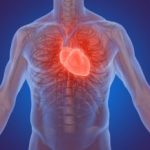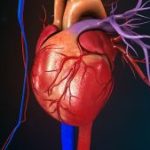September 29th is World Heart Day, which is held and organized by the world heart foundation. The purpose of this occasion is to inform people about cardiovascular diseases, which cause many cases of preventable death in the world. To better facilitate this purpose, we have compiled a list of articles to help get you started on the causes of heart disease. You will find information on what causes an enlarged heart and fluid around the heart, diabetes and heart disease, and what to expect during a massive heart attack. We hope this information can help our readers and potentially save a life in the future.
 Enlarged heart (cardiomegaly): Causes, symptoms, diagnosis, and treatment
Enlarged heart (cardiomegaly): Causes, symptoms, diagnosis, and treatment
Cardiomegaly (enlarged heart) isn’t a disease on its own, but rather a symptom of another condition. An enlarged heart can be seen on X-ray images, but additional tests are required to determine the exact cause of cardiomegaly.
Advertisement
Cardiomegaly can be temporary or chronic, depending on its underlying cause. In many cases, cardiomegaly is a treatable condition, but it’s important that you see your doctor at the first sign of the condition.
The main type of enlarged heart is dilated cardiomyopathy, where both ventricles of the heart become stretched and thin. Another type is hypertrophic cardiomyopathy, where the walls of the heart become very thick—it is an inherited condition. An enlarged heart can function better when it is thicker, compared to when it is thinner. Continue reading…
 Diabetes and heart disease: Symptoms and prevention for heart disease in diabetic patients
Diabetes and heart disease: Symptoms and prevention for heart disease in diabetic patients
Having type 2 diabetes for many years can predispose you to an increased risk of heart disease. This is especially true in those with the metabolic disease who manage the condition poorly. Unfortunately, this is an all too common scenario, as those with type 2 diabetes are often unaware of their deteriorating heart condition because there may be signs or symptoms at all. Continue reading…
 Fluid around the heart (pericardial effusion) in the elderly: Causes and treatment tips
Fluid around the heart (pericardial effusion) in the elderly: Causes and treatment tips
Pericardial effusion is a condition that describes fluid accumulation around the heart. The double-layered structure that surrounds the heart is known as the pericardium, and there is normally a thin layer of fluid found between the layers. Fluid in greater amounts can accumulate in the pericardium as a result of an injury or disease—it can also be the result of inflammation or bleeding.
Too much fluid around the heart can cause added pressure on the heart, and if left untreated, it can be a fatal condition. Continue reading…
 Massive heart attack: Causes, diagnosis, and treatment tips
Massive heart attack: Causes, diagnosis, and treatment tips
As the name suggests, a massive heart attack is the most severe form of heart attack one can experience. The symptoms may be so great that victims may become unconscious, suffer permanent heat damage, or simply drop dead on the spot.
Heart attacks, in general, are a serious health issue. The medical term for a heart attack is myocardial infarction, which means that the heart tissue experienced cell death due to lack of blood supply. If a large portion of heart muscle dies, this is referred to as a massive heart attack.
Advertisement
Heart attacks strike nearly 600,000 people each year, with the survival rate of these individuals not being so great, with massive heart attack survival rates estimated at less than six percent. Heart attacks, also known as cardiac arrest, are considered the third leading cause of death in the U.S. behind cancer and heart disease. Continue reading…
 Right ventricular hypertrophy: Causes, symptoms, and treatment tips for enlarged right ventricle of the heart
Right ventricular hypertrophy: Causes, symptoms, and treatment tips for enlarged right ventricle of the heart
Right ventricular hypertrophy or RVH means the right side of the heart is enlarged. It can be a serious condition, so a clear understanding of the causes, symptoms, and potential treatment options is important.
When a person suffers from right ventricular hypertrophy, the right ventricle, which is the lower chamber of the heart, dilutes itself. This means that it becomes weaker. Right ventricular hypertrophy or RVH is considered a rare disease of the heart, while left ventricular hypertrophy is more common. Continue reading…
